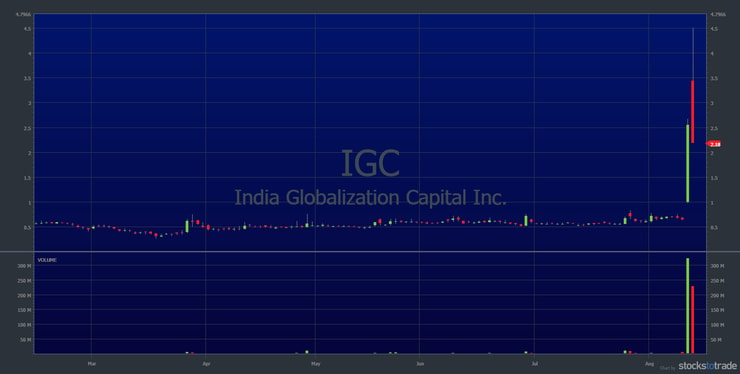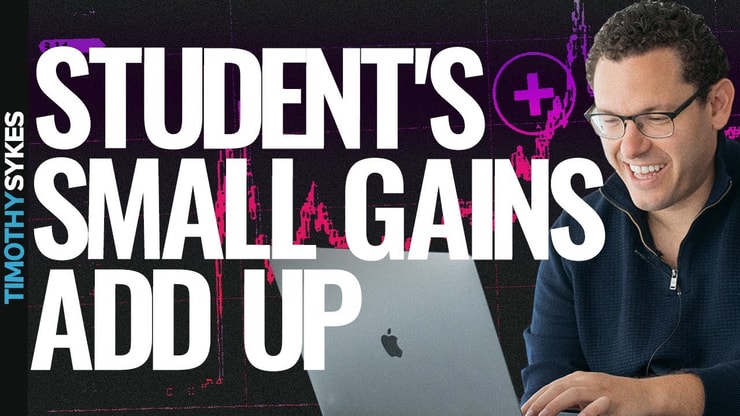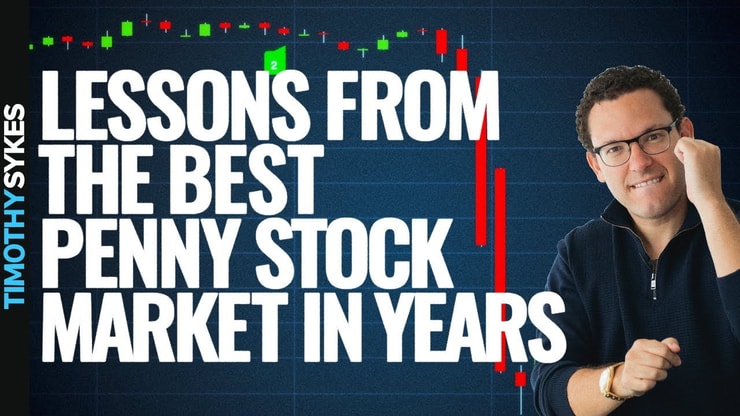It’s high time to talk about medical marijuana stocks right now. There’s more to them than just getting high…
Medical uses for marijuana are extremely hot. It’s said to be effective in helping to treat all sorts of diseases. It’s prescribed for multiple sclerosis, glaucoma, cancer, and even Alzheimer’s.
You’re not here for medical breakthroughs. You wanna know — how do you intelligently approach the medical marijuana sector? What marijuana stocks should you be looking at? What should you expect from medical marijuana stocks in the year ahead?
In this post, I’ll dig into what’s happening with medical marijuana stocks.
Table of Contents
- 1 What Are Medical Marijuana Stocks?
- 2 Medical Versus Recreational Marijuana
- 3 Types of Medical Marijuana Stocks
- 4 Marijuana Medical Stocks to Watch
- 5 The Rise of Medical Marijuana Stocks
- 6 How I’d Trade Medical Marijuana Stocks
- 7 Marijuana Industry ETFs
- 8 Key Tips to Trade Medical Marijuana Stocks
- 9 What Should You Look for in Medical Marijuana Stocks?
- 10 Apply for My Trading Challenge
- 11 Frequently Asked Questions About Medical Marijuana Stocks
- 12 Conclusion: Ready to Start Trading Medical Marijuana Stocks?
What Are Medical Marijuana Stocks?
Your first step is understanding what medical marijuana is. It’s marijuana that’s specifically used to treat medical conditions or diseases. This is one of the biggest uses for marijuana — and in the U.S. it’s legal in most places.
Expectations for the future are even greater. Some estimates put the medical marijuana market at near $150 billion within a decade.
For comparison, the total U.S. wine market is currently generating just over $70 billion a year.
Medical Versus Recreational Marijuana
Nope: not all marijuana use involves stoner flicks and junk food.
Here’s how medical marijuana is different from recreational marijuana:
- You need a doctor’s note. To get medical marijuana, you need a recommendation from a doctor. You can then go to an approved dispensary to buy cannabis products.
- The goal isn’t getting high. Medical marijuana often has less THC, since the goal isn’t to get high. It might instead emphasize cannabinoids like CBD. Other compounds have different medicinal effects.
- Medical marijuana is legal in more places. 33 states have comprehensive medical cannabis programs. 13 more have approved low-THC, high-CBD medical marijuana. Only 11 states have legalized recreational marijuana.
Types of Medical Marijuana Stocks
Now, what are medical marijuana stocks? These stocks are related to the medical marijuana industry, and might include:
Marijuana Growers
This is one of the most straightforward types of marijuana stocks. Some of the biggest companies in the medical marijuana space are growers. Examples include Tilray (NASDAQ: TLRY), Aurora Cannabis (NYSE: ACB), and Curaleaf Holdings (OTCQX: CURLF). Curaleaf is now the biggest pot stock in the world.
Marijuana Distributors
These are the companies responsible for transporting the product. Jushi Holdings (CNSX: JUSH) is a fast grower in this space.
Marijuana Dispensaries
In the U.S. and Canada, people buy medical marijuana at dispensaries.
U.S.-based dispensaries have a harder time getting listed due to pot’s federal illegality. You’ll find dispensary stocks like Harvest Health & Recreation (OTCQX: HRVSF) in penny stock land.
Pharma Stocks
Pharma companies are getting hip to the medical marijuana trend. These companies develop drugs with CBD or medical marijuana.
GW Pharmaceuticals (NASDAQ: GWPH) is one of the best known. In 2018, the company rolled out the first CBD-based drug to win FDA approval.
Related Products
To grow marijuana, you need supplies. This affects companies offering hydroponic products, fertilizer, and lighting systems. These stocks include GrowGeneration Corp (NASDAQ: GRWG) and even Scotts Miracle-Gro (NYSE: SMG).
Marijuana Medical Stocks to Watch

Sectors can heat up quickly with the right news catalyst (more on those later) or further legislation changes … I’m always watching for the next hot sector.
Medical marijuana penny stocks heat up every time news links marijuana to a new treatment. Like the news that was recently released about the FDA approving cannabinoid trials on Alzheimer’s patients…
India Globalization Capital, Inc. (NYSE: IGC)
The company with the Alzheimer’s trial is India Globalization Capital, Inc. (NYSE: IGC).
The news hit in post-market on August 11. The stock soared over 300% the next day. The following day, it gapped up even more. By then it was overextended … and gave us a beautiful first red day short selling opportunity.

It’s a great example of how the right news can affect a stock and the whole sector. A lot of the big pot stocks were green the two days that IGC was running. If they discover a treatment and more supply is needed, it could start an even bigger uptrend.
Wanna learn my process for finding trading opportunities? Get my FREE weekly stock watchlist here. (Pro tip: it’s called a watchlist for a reason — you need to watch it every day.)
It’s not a cheat sheet though. You’ll need to study up on trading indicators to know when to trade these stocks.
For more on stocks I’m watching right now, check out this post.
The Rise of Medical Marijuana Stocks
Could medical marijuana stocks make a comeback? There are a few pretty compelling reasons, such as…
Trends Influencing Marijuana Stocks
Increased Interest in Holistic Healing
Recent years have seen an increased interest in holistic medical alternatives. Medical marijuana is a big part of this.
People are increasingly digging the potential of cannabis for healing. This trend is still growing, and there’s room for medical marijuana to branch out. The more studies come out, the more the stocks will see the benefit.
More and More Legalization
Following each wave of legalization, pot stocks enjoyed a surge in popularity. More states are gonna follow … and more companies will create supply for all that demand.
2018’s Farm Bill
In 2018, the federal approval of the Farm Bill legalized the production of hemp, giving the U.S. a “legal” source of CBD.
Before this, CBD was federally illegal. Now it inhabits a legal grey area. The federal government is still waiting on the FDA to properly regulate CBD. In the meantime, you see CBD everywhere — from pet stores to airport gift shops to yoga studios.
How I’d Trade Medical Marijuana Stocks

There is future potential here … but there’s a lot more you need to know before you start trading.
U.S.-based marijuana stocks can’t trade on the NYSE or Nasdaq. You’ll need to know the ins and outs of trading penny stocks. And if you’re new to this niche, I recommend checking my FREE penny stock guide here.
Are Medical Marijuana Stocks Easy to Trade?
How do you buy cannabis stocks? It’s not always as simple as making a selection and executing a market order…
Here’s what you need…
#1 Stock Screener
The best way to find medical marijuana stocks that hit your criteria is with a stock screener.
A stock screener is a platform where you can filter stocks by criteria that you set up. It’s the first step in creating a strong watchlist, which should be the basis of all your trades.
My favorite is StocksToTrade. It has the best tools and allows you to execute trades right from the platform.
(I’m an investor in StocksToTrade and proudly helped design it for the penny stocks I LOVE to trade.)
#2 News Catalysts
What’s a news catalyst? Any news related to a company or sector that could affect stock prices.
A good platform will include a news scanner with a wide net to catch these catalysts…
StocksToTrade is also best in class here with its new Breaking News Chat. It’s run by two former Wall Street pros. They sift through news and only post the most relevant developments. It’s changed my trading this year.
Below are some of the most common news catalysts you’ll encounter…
Earnings Reports
After the end of each quarter, public companies release a quarterly earnings report.
If the company performs better than anticipated, it can (but won’t always!) drive up the stock price. If the company doesn’t meet an earnings target? It can have the opposite effect and bring the stock’s price down.
Big Contracts
What’s an example of a newsworthy contract? Let’s imagine a major pain relief company partnering up with a pot company to create a cannabis-laced aspirin. (Don’t get excited, this didn’t actually happen!)
This could create some massive price movement. And not just for the companies in question but for the entire sector.
Notable New Hires
A change in personnel can affect a company’s stock price. If a high-performing CEO steps down, the uncertainty could bring the stock price down.
But if they find a hotshot replacement, that could have a positive effect on the stock price.
Policy Changes
State and federal policies keep evolving as legalization continues to unfold. Stocks could experience some big movements as a result of these ongoing events.
#3 Chart Patterns and Indicators
Good stock research usually has a mix of fundamental and technical analysis.
Fundamental analysis covers finances, earnings reports, and the company’s overall stats. Technical analysis is all about the charts. And as my Trading Challenge students know, I’m all about charts.
Even if a stock has amazing fundamentals, you’ve gotta back it up with price action on the chart. I like to look for clean, easily identifiable patterns in stocks. I don’t like surprises…
Want to learn more about my favorite stock chart patterns? Check out this post.
#4 Volume and Volatility
Before you buy medical marijuana stocks, you should understand volume and volatility. (This is also true for any stock!)
In general, penny stocks are more volatile than higher-priced stocks. That’s because the companies are typically smaller and less established. They’re generally not as reliable as large-cap companies.
Low-priced medical marijuana stocks have the same volatility as other penny stocks. And they’re in an emerging sector that hasn’t proven itself yet. Regulations, red tape, and FDA hesitation make it very risky.
Lots of volatility can mean the potential for profit — but it can also mean the potential for big losses. Get my FREE “Volatility Survival Guide” to help you navigate this volatile market.
Marijuana Industry ETFs
What’s an ETF? It stands for exchange-traded funds. ETFs include several underlying stocks or other securities under one umbrella. You can buy shares of an ETF like a stock, but it actually represents several different assets.
There are several ETFs that focus on the marijuana industry these days. So if you’re not sure where to start with pot stocks, this could be a way to test out the waters.
Personally, this isn’t my approach. I prefer to be a step ahead of followers and do my own stock research.
Key Tips to Trade Medical Marijuana Stocks
Here are a few more things you need to do before you start trading medical marijuana stocks…
Establish Your Budget
First thing, ask yourself this. How much of your account are you willing to put on the line when trading medical marijuana stocks?
How big do you want to go? There’s no definitive answer here. It depends on multiple factors. Consider the size of your account, your risk tolerance, and how solid you think the setup is.
My advice: Study hard before you put any of your account on the line. And when you do start, go small at first. You can always scale up in time — after you prove to yourself that your strategy works.
Research the Company
How do you know if the stock you’ve chosen is a good pick? Research. LOTS of research.
Solid fundamental and technical analysis will help you out here. Get an idea of what the company is, what it does, the buzz around it, and its earnings.
Read up on their financials and what people are saying about them. Then, back it up by looking at the charts and price action.
Understand the Risks of Investing in Medical Marijuana Stocks
There’s a lot of risk in trading medical marijuana stocks. Legal ambiguity, lack of clear regulations, and constantly changing laws. This adds up to a ton of uncertainty. These are some of the specific risks.
Hard-to-Value Stocks
Compare a stock’s price to the company’s earnings, along with cash flow and overall revenue. Some marijuana stocks have grown so fast it’s hard to get an accurate read on their growth potential.
Also, some newer companies aren’t profitable yet or are too new to really show historical data.
That means most people are just looking at growth projections … And ignoring the cold, hard facts of history.
It can be hard to determine if a price is appropriate. Especially since no one really knows what the future legal forecast holds.
A Lot of These Companies Will Fail
Medical marijuana stocks had some trending a few years back. Plenty of people jumped on the bandwagon with weed-related startups.
Trouble is, with such a glut of supply, the demand eventually decreased. And some companies failed.
If there’s another weed boom, do your research. If you’re holding stock in a doomed company, you could lose big (unless you’re short selling).
Potential Dilution
As the medical marijuana sector heats up, lots of companies are eyeing expansion.
But if they don’t have enough capital, they may issue more shares to build up capital. The value of the existing shares drops with more outstanding shares.
Dilution is a real risk for marijuana stocks. Their legal grey area prevents most U.S. companies from borrowing from banks. They might have to resort to creative means to raise cash.
Risk of Commoditization
Marijuana is grown, which classifies it as agricultural. Here’s the thing: agricultural products are considered commodities.
Commodities are a classification of securities that includes raw materials and items. They range from metals like gold to resources like oil.
Commoditization can lower a product’s price. Companies must adhere to industry standards to maintain even demand.
Should You Trade Marijuana Stocks Now?
I never blindly tell people what volatile later in the day than in the after-hours market. This is when traders and investors close out positions or spot stocks to buy. My approach is to look at big percent gainers that have an exciting catalyst, then watch for a pattern to emerge. This one is my favorite.
If a lot of news or volume comes into the sector then you’ll want to be there for the opportunity. Trade like a sniper and wait for the best time to enter a position.
What Should You Look for in Medical Marijuana Stocks?
So what should you look for in medical marijuana penny stocks in the future? Watch for emerging news about new treatments and research developments.
Apply for My Trading Challenge
I could talk about medical marijuana stocks all day, offering tips, tricks, and insight …
But you won’t really make much of any of it without understanding how trading actually works.
In my Trading Challenge, my goal is pretty simple: I want to teach you how to think for yourself as a trader. I want you to formulate your own game plan when hot sectors like medical marijuana stocks pop up.
Before you can do that, you have to start with the basics. In the Challenge, I teach my students exactly that. This covers penny stocks all the way to advanced charting techniques.
But it’s not just me and my top students making videos and webinars. I also trade alongside beginners — even if you have a small account. I use my trades as lessons to teach you how to trade more intelligently.
Frequently Asked Questions About Medical Marijuana Stocks

Conclusion: Ready to Start Trading Medical Marijuana Stocks?
Medical marijuana is a sector that’s gotten hot in the past, and it’s likely to get hot again.
The legal landscape for marijuana and CBD in the U.S. is changing, and plenty of stocks are making big moves. The volatility in this market can be dangerous…
But it can also provide opportunities for traders who are willing to do the research. And it can work for traders who have the risk tolerance to handle this action-packed sector.
Ultimately, the same principles hold true for these stocks as for any other stocks. Bottom line: you need to do your homework. Be sure to make a watchlist, do your research, and always cut losses quickly.
Do you trade medical marijuana stocks? If so, do you have anything to add? Leave a comment!
Are Medical Marijuana Stocks Illegal?
Medical marijuana IS illegal in non-legalized states. But trading companies in the medical marijuana sector is completely legal. That’s true even if you live in a state where medical or recreational marijuana is not legalized.
3 Medical Marijuana Stocks that Pay Dividends
Most of the big names in the sector don’t pay dividends directly. But if that’s important to you, you can find companies that pay dividends. Most have gotten into the sector through joint ventures or stake purchases. Anheuser-Busch InBev SA/NV (NYSE: BUD), Molson Coors Beverage Co. (NYSE: TAP), and Altria Group (NYSE: MO) are some of the biggest.
Top Medical Marijuana Stocks Traded on Nasdaq
A lot of the biggest medical marijuana stocks list on the Nasdaq, like Tilray, Inc. (NASDAQ: TLRY) and Aphria, Inc. (NASDAQ: APHA). Even more list on the New York Stock Exchange and OTC Markets.
What Are the Fastest Growing Marijuana Stocks?
Determining the fastest-growing marijuana stocks requires due diligence and research into each company. Look for growth in earnings year over year and new product developments.
How Can You Invest in Medical Marijuana Stocks in Australia?
Australia is undergoing its own medical marijuana renaissance these days. In 2016 the country legalized medical marijuana on a federal level. Medical marijuana stocks trade on the Australian Securities Exchange (ASX).






Leave a reply